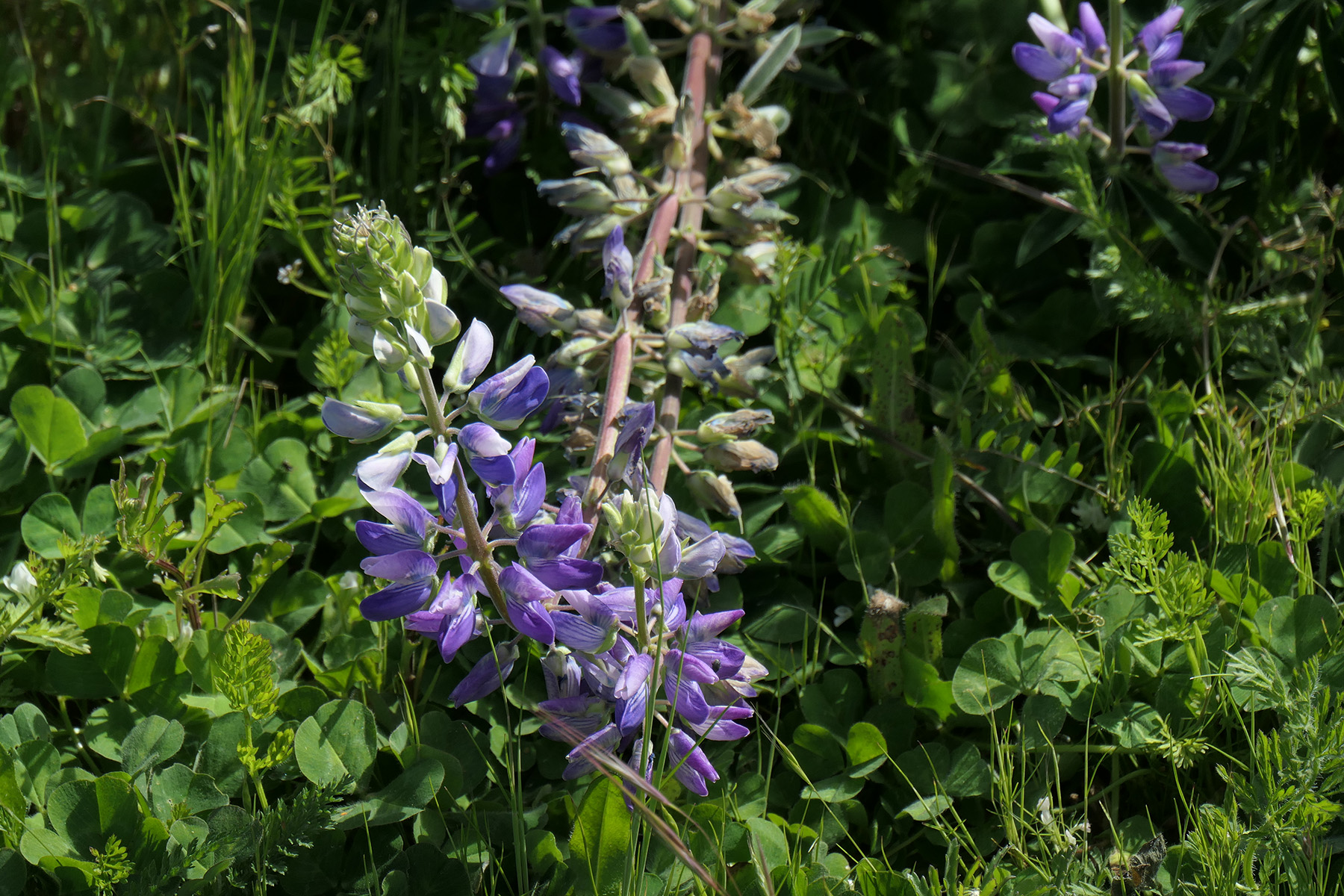In 1917 a ‘Lupin’ banquet was given in Hamburg at a botanical gathering, at which a German Professor, Dr. Thoms, described the multifarious uses to which the Lupin might be put. At a table covered with a tablecloth of Lupin fibre, Lupin soup was served; after the soup came Lupin beefsteak, roasted in Lupin oil and seasoned with Lupin extract, then bread containing 20 per cent of Lupin, Lupin margarine and cheese of Lupin albumen, and finally Lupin liqueur and Lupin coffee. Lupin soap served for washing the hands, while Lupin-fibre paper and envelopes with Lupin adhesive were available for writing. (Ref.)

I guess, the guy liked lupins. Turns out, he was not the only one. In 1949, Connie Scott (later know as the Lupin Lady), of Godley Peaks Station in New Zealnd, “scattered lupin seeds along the roadside. She bought about £100 worth from the local stock and station agent, hiding the bill from her husband for many months, hoping simply to make the world more beautiful.” It started an ecological disaster, as well as becoming a source for economic gain both from tourist trade – travelers arrive in flocks to marvel at the beauty – and sheep farming in otherwise barren regions.

What is it with lupins? On the one hand, they (particularly the white and yellow varieties) are a high-protein plant source, a real alternative to soy beans. Given that the global demand for meat, dairy and fish products for human consumption is recognized as unsustainable due the high environmental impact of animal production and given our knowledge about the rise in diseases associated with excessive consumption of animal products, plant-based protein really looks promising. Lupin use as a protein crop is widely spread in Australia and now recommended for European farmers, once some advanced breeding techniques are developed to provide new lupin varieties for socio-economically and environmentally sustainable cultivation.

Ironically, the protein these plants provide is also widely used in sheep farming, so we all can enjoy one more rack of lamb….
This is where the conflict between conservationists and farmers arises, at least in New Zealand. Lupins clog braided river beds, providing shade for many invasive species of weeds to move in and they are disturbing nesting sites for endangered birds – Black stilts and certain terns need to nest on gravel beds in these rivers, which are now grown over. The environmental agencies are bowing to the sheep farmers’ needs, with scant efforts to control the spread of the plant that gets carried far in the sheep’s fleeces, with landowners not taking any responsibility. Ecologists see them as uncontrollable weeds like scotch broom, their spreading soon to be unstoppable across the entire land

*
In Oregon we have, strangely, the opposite problem. Kincaid’s lupine or Oregon lupine is regionally endemic from Douglas County, Oregon north to Lewis County, Washington. They are now threatened due to the loss of prairie lands where they once flourished. The smaller the prairies – a result of urbanization and use for agriculture – the larger the distance between them, which means seeds have a harder time being spread into suitable environments to grow. We finally got a critical habitat designation in 2006, after the plant had been declared threatened in 2000. The was essential because they are the primary larvae food plant for the endangered Fender blue butterfly (Icaricia icarioides fenderi), which is found only in Oregon. The plant is also used by the Puget blue butterfly ((Icaricia icarioides blackmorei) in Washington State.


It’s never simple, is it? What’s good for ecology in our region might be bad in other countries. What’s good for economic development, including alternate protein sources for poor, developing-world nations whose populations face hunger and malnourishment, might mean the end of certain species whose habitats get destroyed by the plant. Even within industrialized economies there might be conflict. What serves the sheep farmers well for their livestock might undermine the success of brands like Icebreaker who buy up all the wool but run under a certified sustainable flag, now debatable – surely brought to consumers’ attention by ecologist who try to save habitats.




What is simple is to enjoy the beauty of the plants, once you manage to stop thinking: so it was on my Saturday walk up at the protected area on Powell Butte, on an unseasonably hot, windy day with the waves of grass rolling, the lupines shining in blue, the daisies pointing their faces to the sun and the mountains glowing in the distance. My heart sang.

And here is a piece inspired by endless prairies, from 1948, with the composer Lukas Foss playing the piano.
Here is a short piece about the composer and here is an excerpt from The Prairie a composition that is probably more fun to sing than to listen to.






sls
How interesting! Who knew? [Definitely not I.] And yes, how complicated! Like so many other things on this planet, one might say? Have a good week!